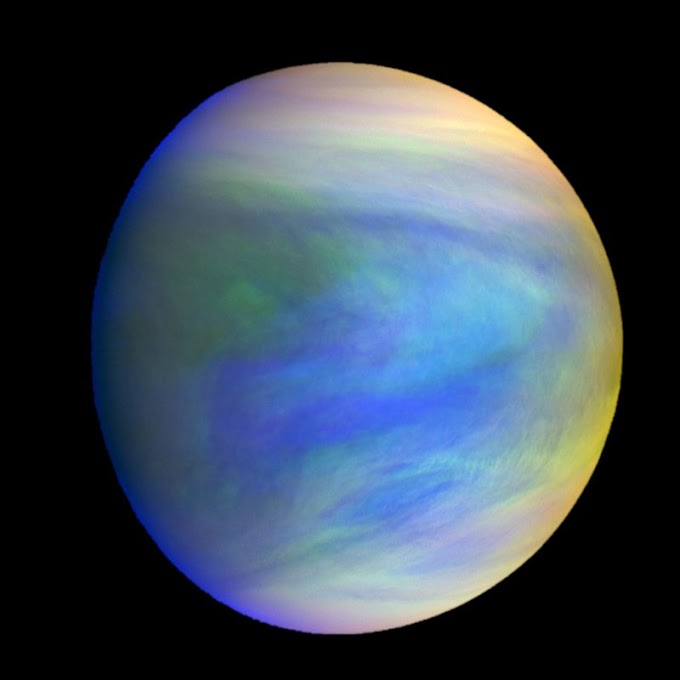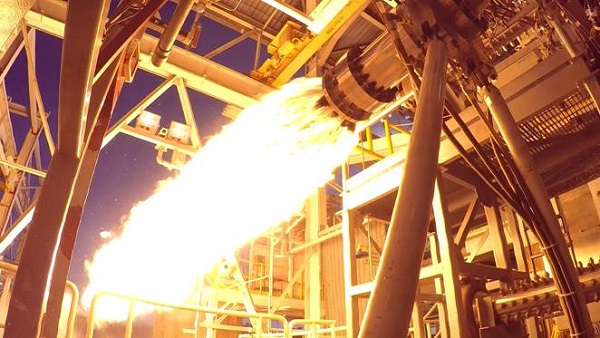 |
| PSLV-C37 launch. (Credit: OneIndia) |
1.PSLV-D1: Launched on September 20, 1993 to put IRS-1E into orbit. The mission wasn't successful due to technical issues in the launch vehicle.
2.PSLV-D2: Launched on October 15, 1994 carrying IRS-P2 whose mission was Operational Remote Sensing. Mission completed in 1997.
3.PSLV-D3: Launched on March 21, 1996 carrying IRS-P3 whose objectives were - Remote sensing of Earth's natural resources, the study of X-ray astronomy, periodic calibration of PSLV tracking radar located at tracking stations. Missions completed during January 2006.
4.PSLV-C1: Launched on September 29, 1997, carrying IRS-1D into an orbit which was an extension of the second generation of IRS series of satellites. Its mission was operational remote sensing and it ended on January 2010.
5.PSLV-C2: Launched on May 26, 1999, carrying IRS-P4 built for oceanographic studies, also known as OCEANSAT, along with Korean KITSAT-3 and German DLR-TUBSAT, three payloads on a single vehicle for the first time in ISRO's history. Mission completed on August 8, 2010.
6.PSLV-C3: Launched on October 22, 2001. Following the footprints of PSLV-C2, this too carried three satellites - India's TES, Belgium's PROBA and Germany's BIRD. TES was an experimental satellite to demonstrate and validate a group of neo-technologies.
7.PSLV-C4: Launched on September 12, 2002 carrying METSAT into Geosynchronous Transfer Orbit (GTO). It was the first time that PSLV rocket put any satellite into GTO. Its mission was strictly meteorological. Mission completed on 2009.
8.PSLV-C5: Launched on October 17, 2003. The payload was RESOURCESAT-1, the most advanced remote sensing satellite the then. It was carried into a polar sun synchronous orbit where it carried out its mission for 5 years ending in 2008.
9.PSLV-C6: Launched on May 5, 2005 carrying CARTOSAT-1 and HAMSAT as payloads, the former being the first satellite to be capable of providing high-resolution in-orbit stereo images and the latter designed to provide radio services to amateur radio operators. CARTOSAT-1's mission life was 5 years. PSLV-C6 was also the first rocket to be launched from the second launch pad at Satish Dhawan Space Centre SHAR, Sriharikota.
10.PSLV-C7: Launched on January 10, 2007 carrying 4 payloads, 2 national and 2 international. India's CARTOSAT-2 and SRE-1, Indonesia's LAPAN-TUBSAT and Argentina's PEHUENSAT-1. PSLV-C7 also marked the first usage of Dual Launch Adopter (DLA) to fit 2 primary satellites in tandem. While CARTOSAT-2 focused on remote sensing, SRE-1 was designed to test the possibility of performing experiments in microgravity conditions. SRE-1 returned back to Earth on January 22, 2007 and CARTOSAT-2 remained to complete its mission life of 5 years.
11.PSLV-C8: Launched on April 23, 2007, PSLV-C8 was India's first commercial launch carrying Italian astronomical satellite AGILE.
 |
| A PSLV rocket dazzles the view. (Credit: ISRO) |
12.PSLV-C10: Launched on January 21, 2008 carrying TESCAR into an elliptical orbit thereby being the first PSLV to launch a satellite into an elliptical orbit with medium inclination.
13.PSLV-C9: Launched on April 28, 2008 with CARTOSAT-9A and IMS-1 as payloads. CARTOSAT-9A focused on remote sensing, but with better equipment, the panchromatic camera (PAN) and IMS-1 was a cost-effective microsatellite imaging mission of ISRO. CARTOSAT-9A's mission life was 5 years and that of IMS-1 was 2 years.
14.PSLV-C11: India's first leap to Moon happened with PSLV-C11. Launched on October 22, 2008, it carried Chandrayaan-1 as payload. The mission was to obtain a chemical, mineralogical and photo-geologic mapping of the Moon. Its mission life was 2 years, however, communications with the satellite were lost on August 29, 2009 after successfully completing all the major mission objectives.
 |
| Chandrayaan-1 undergoing pre-launch tests. (Credit: ISRO) |
16.PSLV-C14: Launched on September 23, 2009 putting OCEANSAT-2 and 6 nano-satellites into Sun-synchronous Polar orbit. Its mission life was 5 years.
17.PSLV-C15: Launched on July 12, 2010 carrying CARTOSAT-2B into polar Sun-synchronous orbit. It also carried a satellite made by students of engineering colleges from Karnataka and Andhra Pradesh for encouraging space technology among the students.
18.PSLV-C16: Launched on April 20, 2011 carrying Indian RESOURCESAT-2, the Indo-Russian YOUTHSAT and Singapore's X-SAT.
19.PSLV-C17: Launched on July 15, 2011 with GSAT-12, a communication satellite, as payload. Mission life was roughly 8 years.
20.PSLV-C18: The twentieth flight of PSLV series happened on October 12, 2011 carrying Megha-Tropiques satellite with 3 auxiliary payloads. Megha-Tropiques, an Indo-French collaboration, focused on studying the water cycle and the energy exchanges in the tropics. Along with it, Jugnu, a nano-satellite developed by IIT Kanpur and SRMSat, a nano-satellite developed by SRM University, was carried by PSLV-C18. Jugnu's mission was imaging the Earth in the near-infrared region, improving GPS system and perform inertial experiments in space, while SRMSat's main objective was to address the global warming issue by monitoring the carbon-dioxide and water vapour levels in the atmosphere.
 |
| Credit: IIT Kanpur |
 |
| SRMSat in assembly. (Credit: ISRO) |
22.PSLV-C21: Launched on September 9, 2012 with French SPOT 6, an Earth observation satellite and Japanese PROITERES, micro-satellites as auxiliary payloads.
23.PSLV-C20: Launched on February 25, 2013 putting the Indo-French satellite and 6 commercial payloads from Canada, Austria, Denmark and Europe into a polar sun-synchronous orbit. SARAL was dedicated to oceanographic studies with a mission life of 5 years.
24.PSLV-C22: Launched on July 01, 2013 carrying India's first navigational satellite Indian Regional Navigation Satellite System or IRNSS-1A. It set up a new benchmark in an indigenous navigational system facilitating disaster management, terrestrial, marine and aerial navigation, timing accuracy enhancement and so on. IRNSS's mission life is 10 years.
25.PSLV-C25: The milestone in India's space mission was established by ISRO's Mars Orbiter Mission whose payload PSLV-C25 carried. M.O.M. or Mangalyaan, launched on November 5, 2013, aimed at getting information regarding interplanetary expeditions. Mangalyaan boosted ISRO's position in the international arena. Using the method of a gravitational slingshot, Mangalyaan was accelerated towards Mars, on whose orbit it was inserted on September 24, 2014. It completed 1000 Earth days on its orbit on June 19, 2017 which was much more than it's mission life of six months.
 |
| A computer-generated model of Mangalyaan. (Credit: ISRO) |
 |
| PSLV-C25 launch. (Credit: ISRO) |
27.PSLV-C23: Launched on June 30, 2014 carrying French Earth observation satellite SPOT 7 into Sun-synchronous orbit along with AISAT from DLR Germany, NLS7.1 and NLS7.2 from UTIAS/SFL Canada and VELOX-1 from NTU Singapore.
28.PSLV-C26: Launched on October 16, 2014 carrying the third indigenous navigational satellite of the IRNSS series, IRNSS-1C constituting navigational and ranging payloads with a mission life of 10 years.
29.PSLV-C27: Launched on March 28, 2015 with IRNSS-1D as payload.
30.PSLV-C28: Launched on June 10, 2015 carrying three DMC3 satellites manufactured by Surrey Satellite Technology Limited (SSTL), a United Kingdom-based company into Sun-synchronous orbit along with CBNT-1, an Earth observation micro-satellite built by SSTL and De-OrbitSail, a nano-satellite built by Surrey Space Centre. This mission was the heaviest commercial mission executed by ISRO.
31.PSLV-C30: Launched on September 28, 2015 carrying India's first multi-wavelength space observatory ASTROSAT along with Indonesia's LAPAN-A2, Canada's NLS-14 and USA's four LEMUR nano-satellites.
32.PSLV-C29: Launched on December 16, 2015 with six satellites of Singapore as payloads, namely TeLEOS-1, VELOX-CI, VELOX-II, Athenoxat-I, Kent Ridge-I and Galassia.
33.PSLV-C31: Launched on January 20, 2016 carrying IRNSS-1E, the fifth navigation satellite in the IRNSS series to Geo-synchronous orbit.
34.PSLV-C32: Launched on March 10, 2016 with IRNSS-1F, the sixth navigation satellite in the IRNSS series, as payload. It was placed on a sub Geosynchronous Transfer Orbit.
35.PSLV-C33: Launched on April 28, 2016 carrying the next IRNSS satellite in the series, IRNSS-1G to a sub Geosynchronous Transfer Orbit.
36.PSLV-C34: Launched on June 22, 2016 carrying the Earth observational satellite CARTOSAT-2 along with satellites from the USA, Canada, Germany and Indonesia as well as two satellites SATHYABAMASAT and SWAYAM from Indian University/Academic Institute, in total there were 20 satellites onboard PSLV-C34.
37.PSLV-C35: Launched on September 26, 2016 with SCATSAT-1 for weather-related studies and seven co-passenger satellites, namely ALSAT-1B, ALSAT-2B, ALSAT-1N from Algeria, NLS-19 from Canada and Pathfinder-1 from the USA, PRATHAM from IIT Bombay and PISAT from PES University, Bengaluru, into polar Sun Synchronous orbit.
38.PSLV-C36: Remote sensing satellite RESOURCESAT-2A was launched on December 7, 2016 by PSLV-C36, a continuation to RESOURCESAT-1 and 2 providing remote sensing data services to global users.
39.PSLV-C37: Launched on February 15, 2017 carrying Cartosat-2 series satellite which began providing regular remote sensing services using its panchromatic and multi-spectral cameras.
40.PSLV-C38: This mission marked the 40th flight of PSLV series carrying the Earth observational Cartosat-2 series satellite along with 30 co-passenger satellites of which 29 nano-satellites were from 14 countries namely Austria, Belgium, Chile, Czech Republic, Finland, France, Germany, Italy, Japan, Latvia, Lithuania, Slovakia, UK, USA and one India's satellite NIUSAT.
 |
| Multi-spectral image of Doha, Qatar taken on June 26, 2017 by Cartosat-2 series satellite. (Credit: ISRO) |
Read More: GSAT-03 or EDUSAT
41.PSLV-C39: Launched on August 31, 2017 with the eighth satellite in the IRNSS series, IRNSS-1H, but PSLV-C39 failed to put the navigation satellite into orbit, as a result, the mission was unsuccessful. This is the second failure of PSLV since it's the first one in 1993.
42.PSLV-C40: Launched on January 12, 2018 carrying Cartosat-2 series satellite for Earth observation along with 30 co-passenger satellites of which one micro-satellite and one nano-satellite are from India also 3 micro-satellites and 25 nano-satellites from 6 countries, namely, Canada, Finland, France, Republic of Korea, UK and USA.
43.PSLV-C41: The eighth navigation satellite to join IRNSS-A,B,C,D,E,F,G was IRNSS-1I launched by PSLV-C41 on April 12, 2018.
44.PSLV-C42: Launched on September 16, 2018 carrying 2 foreign satellites, UK's NovaSAR and S1-4 both being Earth observational satellites.
45.PSLV-C43: Launched on November 29, 2018 with India's Hyperspectral Imaging Satellite or HysIS which was designed to study the Earth’s surface in the visible, near-infrared and shortwave infrared regions of the electromagnetic spectrum. 30 international satellites were onboard PSLV-C43 along with Hysis.
46.PSLV-C44: Launched on January 24, 2019 with Microsat-R, an imaging satellite and Kalamsat-V2, a student dedicated satellite, as payloads.
47.PSLV-C45: Launched on April 01, 2019 carrying EMISAT, a satellite for electromagnetic spectrum measurement and 28 other international satellites.
48.PSLV-C46: Launched on May 22, 2019 carrying radar imaging Earth observation satellite RISAT-2B into Low Earth Orbit.
49.PSLV-C47: Launched on November 27, 2019 with Cartosat-3, a 3rd generation advanced satellite capable of taking high-resolution pictures, and 13 commercial nano-satellites from the USA.
50.PSLV-C48: The last flight till the date of PSLV took place on December 11, 2019 carrying RISAT-2BR1, a radar imaging Earth observation satellite with a mission life of 5 years, along with 9 commercial satellites of Israel, Italy, Japan and USA.








0 Comments